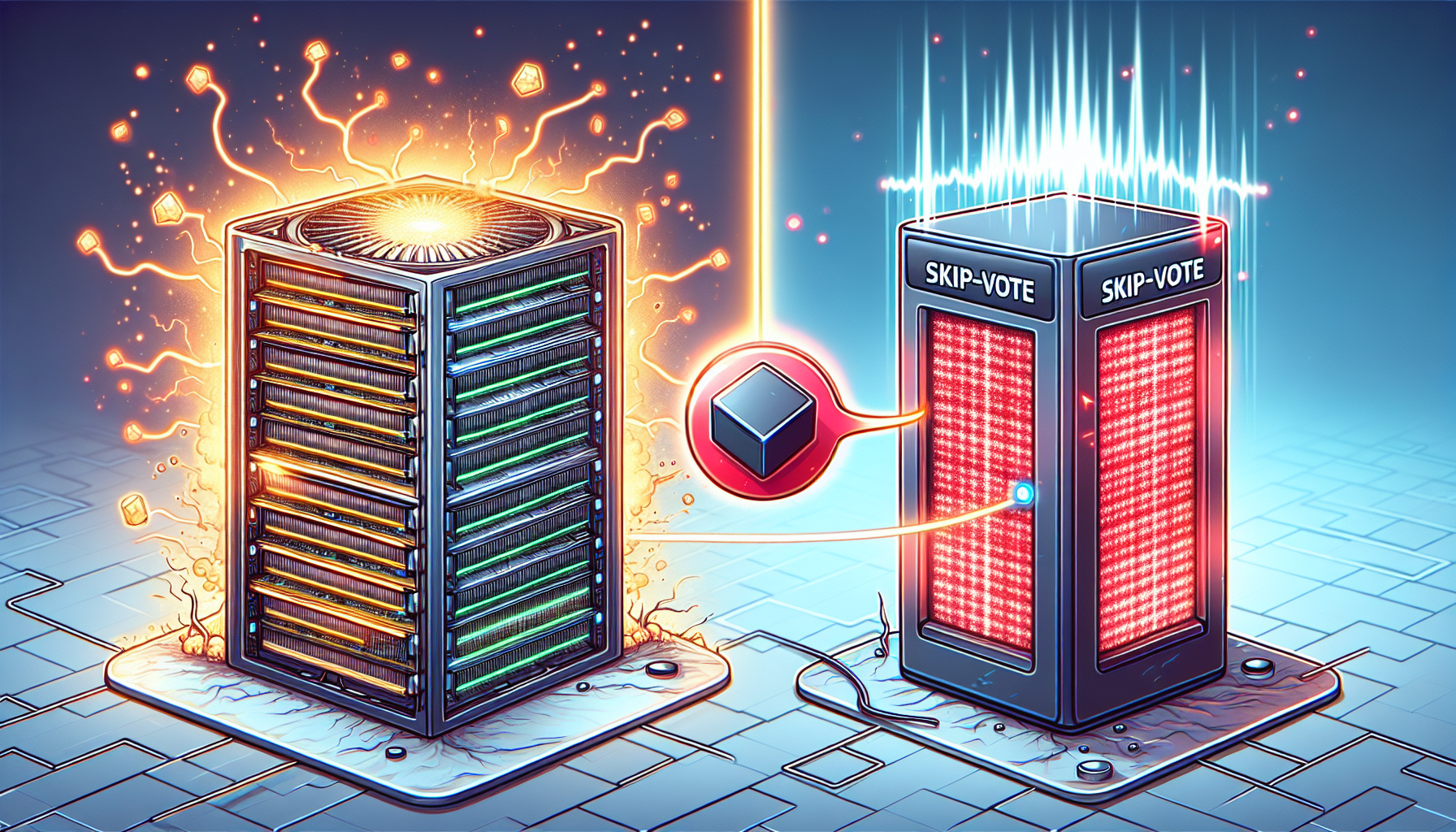
tl;dr
Solana developers are debating a proposal to eliminate block compute unit limits in the Alpenglow upgrade, aiming to boost scalability by letting block sizes dynamically scale with validator hardware. The plan sparks controversy over decentralization risks and fairness.
**Solana Developers Debate Proposal to Remove Block Limits in Alpenglow Upgrade**
Solana developers are considering a significant shift in the network’s architecture, with a proposal to eliminate the current block compute unit cap once the Alpenglow upgrade is implemented. The plan, submitted as SIMD-0370 by the Firedancer development team at Jump Crypto, aims to enhance throughput by allowing block sizes to dynamically scale based on validator hardware capabilities. This change could reshape how transactions are processed on the Solana blockchain, but it has also sparked debate over decentralization and fairness.
### The Proposal: Scaling Through Validator Performance
Currently, Solana enforces a hard limit of 60 million compute units (CUs) per block, a cap that the proposal argues artificially restricts network capacity. Under the new framework, blocks would expand to accommodate as many transactions as the fastest validators can handle, while smaller validators could opt out of processing larger blocks via a "skip-vote" mechanism. This dynamic approach would theoretically let the network’s performance grow in tandem with advancements in hardware, rather than being constrained by a fixed limit.
The Firedancer team, part of Jump Crypto’s digital assets division, criticized the existing system as fundamentally flawed. “The capacity of the network is determined not by the capabilities of the hardware but by the arbitrary block compute unit limit,” the proposal states. By tying block size to validator performance, the team argues, Solana could achieve greater scalability without compromising its core principles.
### Context: Jump Crypto’s Role and Strategic Moves
Jump Crypto, a major player in the crypto space, has been actively involved in Solana’s ecosystem. Earlier this month, the firm contributed to a $1.65 billion private placement (PIPE) deal for Forward Industries, a venture aimed at establishing a public Solana treasury strategy. This move underscores Jump’s broader efforts to institutionalize Solana’s token economy, with the Firedancer proposal aligning with its vision for a more scalable and efficient network.
### Community Concerns: Centralization Risks and Technical Challenges
Despite the potential benefits, the proposal has faced pushback from developers and community members. Critics warn that removing block limits could favor well-funded validators with high-end hardware, potentially sidelining smaller operators and exacerbating centralization. “Overly large blocks could cause propagation delays or weaken security if too many validators abstain from voting,” one GitHub commenter noted.
The skip-vote feature in Alpenglow is designed to mitigate this risk by allowing smaller validators to bypass blocks they cannot process, ensuring consensus remains intact. However, some argue that this could create a two-tier system where only high-performance validators remain active, undermining the network’s decentralized nature.
### Alpenglow: A Foundation for Change
The Alpenglow upgrade, expected later this year, already includes key improvements like reduced block finality (from 12.8 seconds to 150 milliseconds) and skip votes. The Firedancer proposal would build on these changes, further aligning Solana’s capacity with validator capabilities. While the upgrade promises to enhance speed and efficiency, the debate over block limits highlights the ongoing tension between scalability and decentralization in blockchain design.
### The Path Forward
As Solana prepares for Alpenglow, the community will need to balance innovation with inclusivity. The Firedancer team’s proposal represents a bold step toward a more flexible network, but its success will depend on addressing concerns about fairness and security. For now, the discussion remains open, with developers and stakeholders weighing the trade-offs of a future where Solana’s throughput is driven by hardware rather than protocol limits.
The outcome could define Solana’s trajectory in the competitive blockchain landscape, determining whether it can scale effectively while preserving its decentralized ethos.